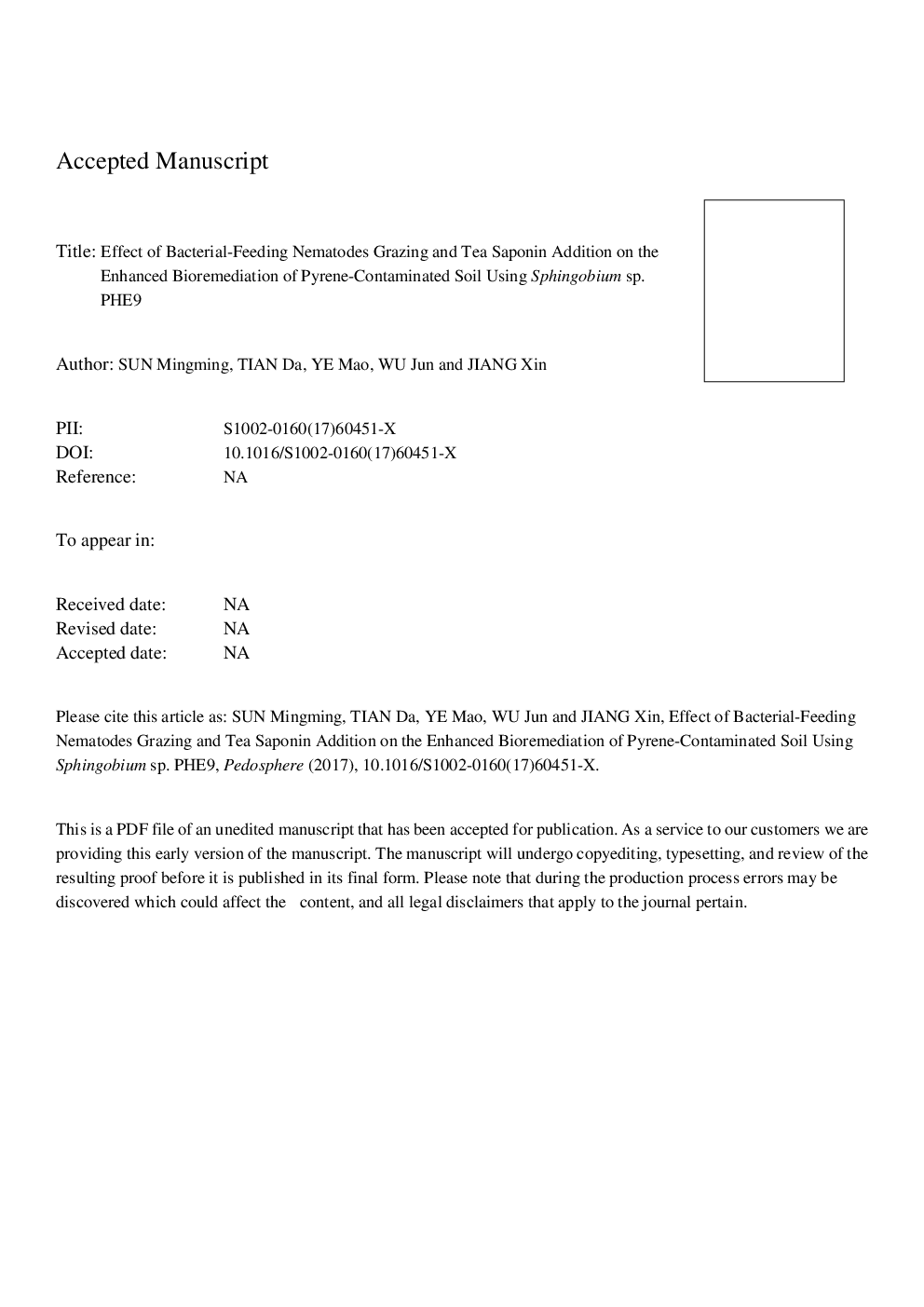| Article ID | Journal | Published Year | Pages | File Type |
|---|---|---|---|---|
| 8895419 | Pedosphere | 2017 | 19 Pages |
Abstract
As one of the most widely distributed bacterial predators in the soil, the role of bacterivorous nematodes on the enhanced bioremediation of polycyclic aromatic hydrocarbon-contaminated soils is crucial, but remains to be investigated. A microcosm-level study was conducted to examine the effects of bacterial-feeding nematode grazing and tea saponin (TS) addition on bioremediation of a pyrene-contaminated soil enhanced by the polycyclic aromatic hydrocarbon (PAH)-degrading bacterial strain Sphingobium sp. PHE9. After 180 d of incubation, the highest pyrene dissipation (71.3%) was achieved through a combination of Sphingobium sp. PHE9 inoculation with nematode and TS addition. Meanwhile, high counts of culturable PAH-degrading bacteria, soil enzyme activity, and biodiversity indices were observed under the combined treatment, implying that the microbiological function of the contaminated soil was significantly restored. Additionally, the results of Tenax® extraction with the first-order three-compartment model indicated that rate-limiting factors varied among treatments. The lack of degrading microorganisms was the main rate-limiting factor for the treatments involving TS/nematode addition, and inadequate bioaccessible pyrene was the vital rate-limiting factor in the treatments involving Sphingobium sp. PHE9 inoculation. The proposed combined clean-up strategy proved to be a promising bioremediation technology for aged pyrene-contaminated soils.
Related Topics
Life Sciences
Agricultural and Biological Sciences
Soil Science
Authors
Mingming SUN, Kuan LIU, Yuanchao ZHAO, Da TIAN, Mao YE, Manqiang LIU, Jiaguo JIAO, Xin JIANG,
